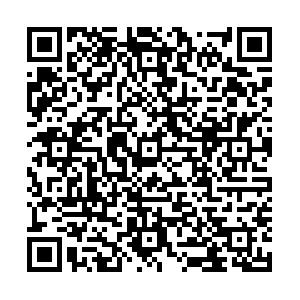|
[1]
|
Hegodus L, Bonnema SJ, Bennedbsek FN, et al. Management of simple nodular goiter:current status and future perspectives.Endocr Rev, 2003, 24(1):102-132. |
|
[2]
|
Meller J, Siefker U, Hamsnn A, et al. Incidence of radioiodine induced Graves' disease in patients with multinodular toxic goiter.Exp Clin Endocrinol Diabetes, 2006, 114(5):235-239. |
|
[3]
|
Wallaschofsld H, Muller D, Georgi P, et al. Induction of TSH-receptor antibodies in patients with toxic multinodular goitre by radioiodine treatment. Horm Metab Res, 2002, 34(1):36-39. |
|
[4]
|
Cseke B, Balazs C. Development of Basedows disease after radioiodine therapy for nodular goiter. Orv Hetil, 2003, 144(47):2327-2329. |
|
[5]
|
Schmidt M, Gorbauch E, Dietlein M, et al. Incidence of postradioiodine immunogenic hyperthyroidism/Graves' disease in relation to a temporary increase in thyrotropin receptor antibodies after radioiodine therapy for autonomous thyroid disease. Thyroid, 2006, 16(3):281-288. |
|
[6]
|
Dunkelmann S, Wolf R, Koch A, et al. Incidence of radiationinduced Graves' disease in patients treated with radioiodine for thyroid autonomy before and after introduction of a high-sensitivity TSH receptor antibody assay. Eur J Nucl Med Mol Imaging, 2004,31(10):1428-1434. |
|
[7]
|
Nygoard B, Knudsen JH, Hegedus L, et al. Thyrotropin receptor antibodies and Graves' disease, a side-effect of 131Ⅰ treatment in patients with nontoxic goiter. J Clin Endocrinol Metab, 1997, 82(9):2926-2930. |
|
[8]
|
Nygaard B, Faber J, Veie A, et al. Transition of nodular toxic goiter to autoimmune hyperthyroidism triggered by 131Ⅰ therapy.Thyroid, 1999, 9(5):477-481. |
|
[9]
|
Weiss M, Gorges R, Hirsch C, et al. Incidence of immunogenic hyperthyroidism after radioiodine therapy of focal thyroid gland autonomy. Results of a multicenter study. Med Klin (Munich), 1999,94(5):239-244. |
|
[10]
|
Giovanella L, Ceriani L, C, arancini S. Evaluation of the 2nd generation radio-receptional assay for anti-TSH receptor antibodies(TRAb) in autoimmune thyroid diseases. Q J Nucl Med, 2001, 45(1):115-119. |
|
[11]
|
Rapoport B, McLachlan S M. Thyroid autoimmunity. J Clin Invest, 2001, 108(9):1253-1259. |
|
[12]
|
Custro N, Ganci A, Scafidi V, et al. Relapses of hyperthyroidism in patients treated with radioiodine for nodular toxic goiter:relat-ion to thyroid autoimmunjty. J Endocrinol Invest, 2003, 26(2):106-110. |
|
[13]
|
Pedersen IB, Knudsen N, Jorgensen T, et al. Thyroid peroxidase and thyroglobin autoanfibodies in a large survey of populations with mild and moderate iodine deficiency. Clin Endocrinol (Oxt),2003, 58(1):36-42. |
|
[14]
|
Hollower JG, Staehling NW, Flanders WD, et al. Serum thyrotropin, thyrox-ine and thyroid antibodies in the United States population (1988-1994):NHANES IL J Clin Endocrinol Metab,2002, 87(2):489-499. |
|
[15]
|
Hirsch C, Spyra JL, Langhammer HR, et al. Occurrence of immune hyperthyroidism after radioiodine therapy of autonomous goiter.Med Klin (Munich), 1997, 92(3):130-137. |

 点击查看大图
点击查看大图




 下载:
下载: